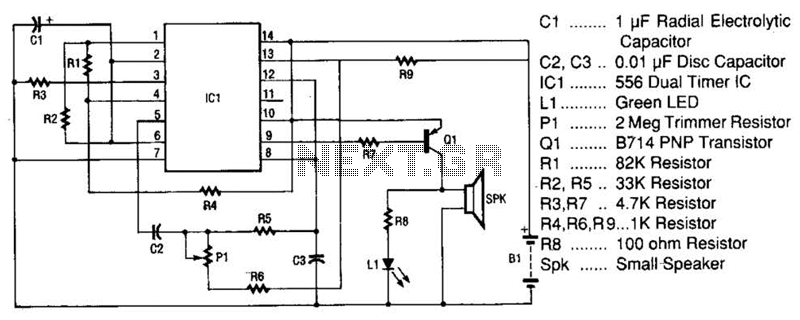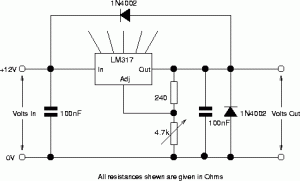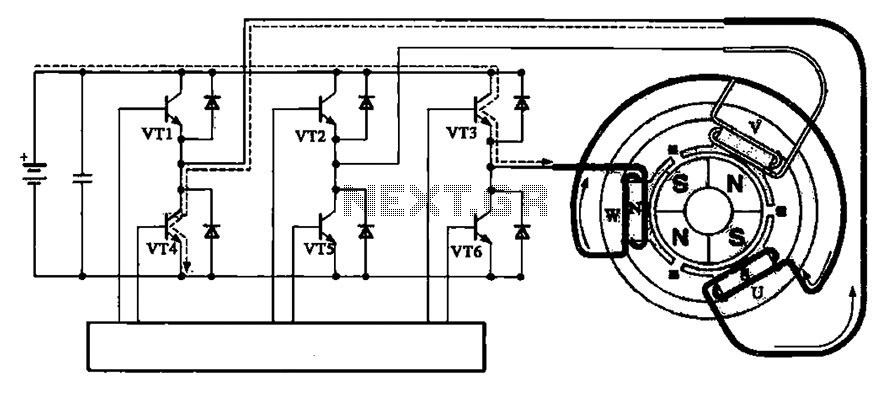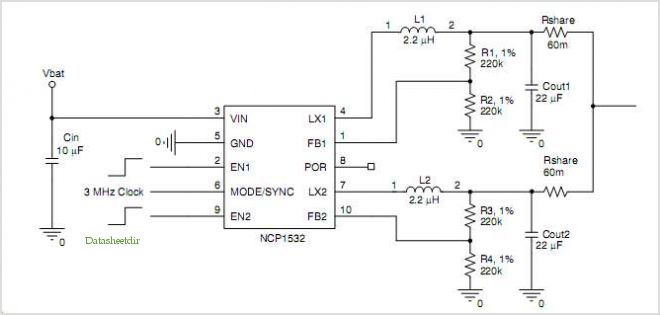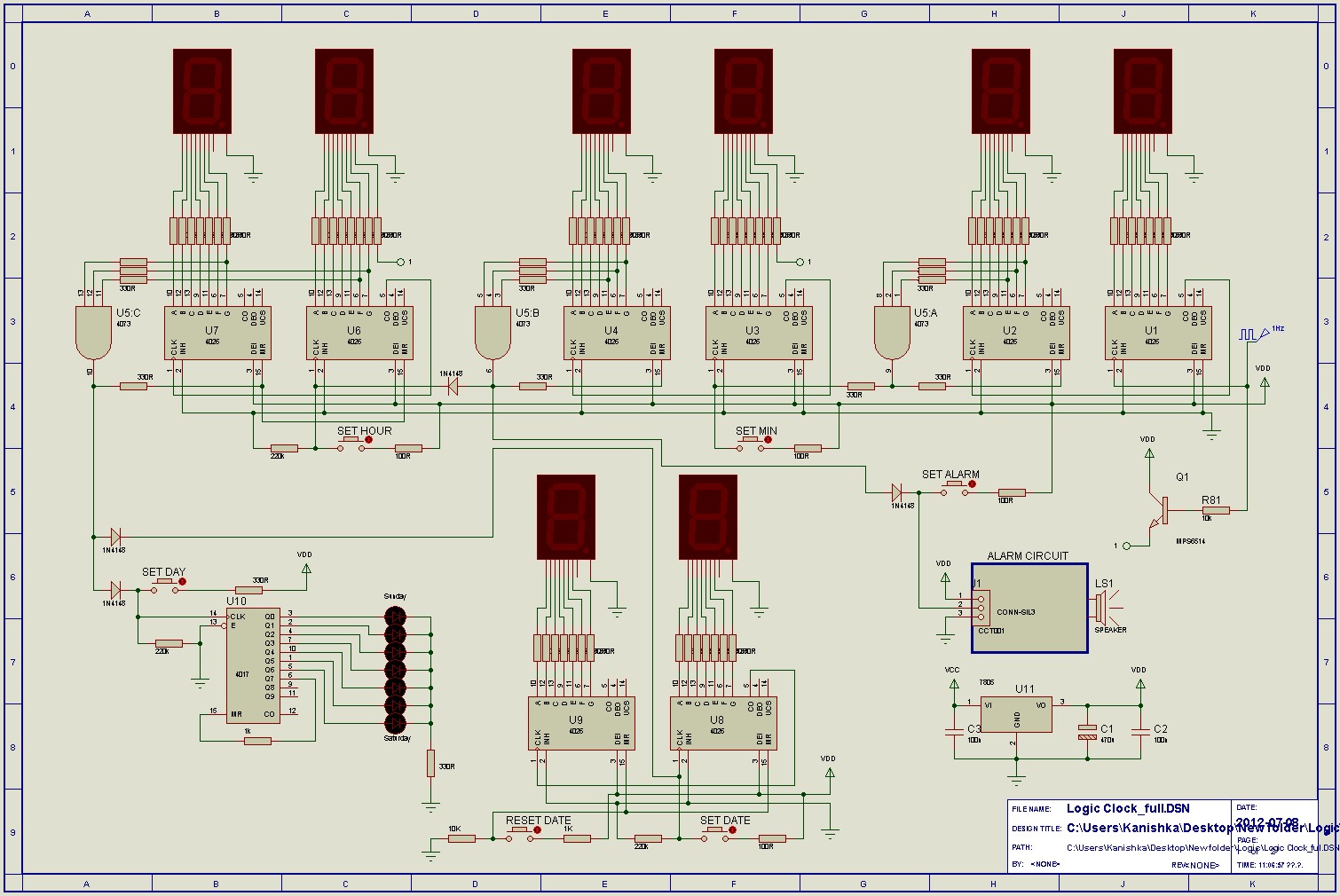
Time delay circuit using a UJT
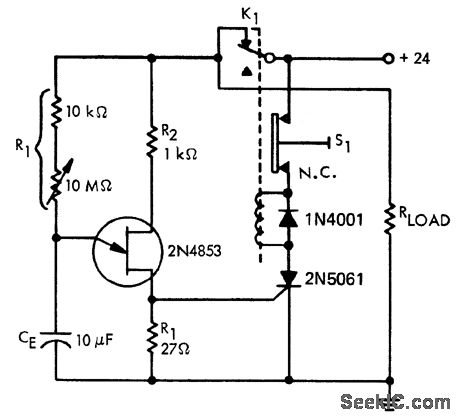
A time delay circuit utilizing a Unijunction Transistor (UJT). The maximum time delay is adjustable via a 10 MΩ potentiometer, allowing the time delay to be configured from less than one second to approximately 2.5 minutes, as referenced by Motorola Semiconductor Products Inc.
The time delay circuit based on a UJT operates by charging a capacitor through a resistor network, where the UJT serves as a switching element. The circuit primarily consists of a UJT, a timing capacitor, a resistor, and a potentiometer for fine-tuning the delay.
When power is applied, the capacitor begins to charge through the resistor, and the time it takes to reach the UJT's triggering voltage determines the delay. The 10 MΩ potentiometer allows for a wide range of resistance values, enabling precise control over the charge time and, consequently, the delay duration.
The capacitor voltage increases gradually until it reaches the peak point of the UJT's characteristic curve, at which point the UJT turns on, discharging the capacitor and triggering the connected load. This action can be utilized in various applications, such as timers, delay switches, or pulse generators.
The circuit's design should include proper biasing for the UJT to ensure stable operation, and considerations for component tolerances are necessary to maintain the desired timing accuracy. Additionally, the selection of the capacitor value and the resistor in conjunction with the potentiometer will influence the overall timing range and performance of the circuit.
For optimal functionality, it is also advisable to incorporate bypass capacitors to filter out any noise that may affect the timing accuracy, and to ensure that the circuit is housed in a suitable enclosure to prevent external interference.Time delay circuit using a UJT. Maximum time delay is set by the 10M pot. Time delay can be set from less than a second to approximately 2. 5 minutes (courtesy Motorola Semiconductor Products Inc. ). 🔗 External reference
The time delay circuit based on a UJT operates by charging a capacitor through a resistor network, where the UJT serves as a switching element. The circuit primarily consists of a UJT, a timing capacitor, a resistor, and a potentiometer for fine-tuning the delay.
When power is applied, the capacitor begins to charge through the resistor, and the time it takes to reach the UJT's triggering voltage determines the delay. The 10 MΩ potentiometer allows for a wide range of resistance values, enabling precise control over the charge time and, consequently, the delay duration.
The capacitor voltage increases gradually until it reaches the peak point of the UJT's characteristic curve, at which point the UJT turns on, discharging the capacitor and triggering the connected load. This action can be utilized in various applications, such as timers, delay switches, or pulse generators.
The circuit's design should include proper biasing for the UJT to ensure stable operation, and considerations for component tolerances are necessary to maintain the desired timing accuracy. Additionally, the selection of the capacitor value and the resistor in conjunction with the potentiometer will influence the overall timing range and performance of the circuit.
For optimal functionality, it is also advisable to incorporate bypass capacitors to filter out any noise that may affect the timing accuracy, and to ensure that the circuit is housed in a suitable enclosure to prevent external interference.Time delay circuit using a UJT. Maximum time delay is set by the 10M pot. Time delay can be set from less than a second to approximately 2. 5 minutes (courtesy Motorola Semiconductor Products Inc. ). 🔗 External reference
Warning: include(partials/cookie-banner.php): Failed to open stream: Permission denied in /var/www/html/nextgr/view-circuit.php on line 713
Warning: include(): Failed opening 'partials/cookie-banner.php' for inclusion (include_path='.:/usr/share/php') in /var/www/html/nextgr/view-circuit.php on line 713
